|
Watching kids "get it" is exciting. There is that confusion and frustration at the beginning that gradually changes as things begin to make sense. Suddenly the light bulb goes off and the smiles appear. There is a definite sense of "Aha". This is often the case in math when kids work with concrete materials. Hands on activities and manipulatives made the difference. That is the magic of using hands on activities and manipulatives to teach basic concepts in math. Here are some different types of games and activities as well as resources that may help as you venture into teaching with concrete examples. Number senseBefore kids can move forward in math, they have to understand what numbers are and be able to work with them. This includes recognizing what the numerals look like, counting objects, making one to one correlation with the number and the object, etc. Counting by one, two, five, and ten can all be done with concrete objects. It's important to make sure that there is understanding of one concept before adding in the next one. Counting by one: Start with picking up objects one at a time and counting them sequentially. Try counting up to five, then ten, and then twenty. Practice this until they can do it without help. Pointing at objects as they are counted also works. Make sure to also work on counting objects that may not be lined up but are in random positions. Counting by two: Once they are able to count by one without prompting, start introducing counting two together. There are several ways to do this. It is important that they understand that they are counting two objects at a time. You could put the objects in pairs and have them count by saying the odd numbers quietly and the even numbers loudly at first, and then have them say the odd number inside their head and the even number out loud. With practice, they will be able to say only the even numbers and do the skip counting by two. Counting by five and ten: Counting by five and ten require a good understanding of larger numbers. Practice using number lines and hundreds charts to expand to larger numbers and do lots of activities to help kids see how these bigger quantities work. Then work on patterns and skip counting by five and ten. Use things like hands or coins for visually counting by five or ten as well. Teach children that numbers have many representations, such as dots, fingers, counters, numerals, objects, ten frames, etc. The goal is to help them to see patterns and relationships between the numbers and objects. The goal is to help them to start understanding how different concepts like more, less, equal to, greater than, less than, etc work. Basic facts for addition and subtraction followed by multiplication and division are also part of number sense. Number sense is key to all aspects of math. It is important to make sure that kids have a solid understanding of how numbers work and the relationships between different operations happen in order to ensure that they will be successful with more abstract and complex concepts. Basic factsWhen we refer to basic facts, we usually mean adding and subtracting single digit numbers. It's important to have a good understanding of these facts and how they work in order to do more complex math questions. Games are a great way to work on these. Start by working with numbers that add up to ten. Making tens is a key concept for many different other skills and concepts. Using dice work well for teaching basic facts to ten. Check out the video below to see how I used dice for teaching how to make tens. Ten framesUsing ten frames is another great visual for how to make ten. Working with ten frame cards or placing objects in containers that represent ten frames help kids to see when they have a ten and how many are needed if they have a number that is less than ten. The more they see these visuals, the easier it is for them to quickly recognize numbers up to ten and what numbers go together to make ten. Check out this video to learn more. I loved using these ten frame cards to play games with my students. They had fun, and they became very good at recognizing similar numbers quickly. Playing "Snap" added an element of friendly competition. Another fun activity was playing with teams using the large cards. One person from each team came forward and as the cards were shown, whoever got the answer correct first got the card. When the cards were all played, the person with the most cards got a point for the team. Then the next two players came up. The cool thing about this, was that all the others saw the cards at the same time and they could mentally practice recognizing the numbers while waiting for their turn. Once kids have a good understanding of how to make ten, they will be more prepared for the rest of the numbers needed for basic facts. Knowing basic facts is important for working with the different math operations successfully. There are many different strategies for working with addition and subtraction to practice basic facts. I will share more about this another time. There is a danger in trying to move kids to abstract concepts too quickly. Take the time to have them work with concrete examples and you will find that the abstract situations will be much easier for them to understand and grasp. When I worked with several students that struggled in early intermediate grades, I found that returning to the basics and using the concrete activities made a world of difference not only to their understanding, but also to their confidence and engagement. It was exciting to see them find light bulb moments and attempt more difficult concepts as a result. Next time I will focus on more skills such as how to represent numbers using base ten models as well as fact families and number bonds. I will also show some other ways to represent numbers as we move from concrete to ablstract. Related PostsDo your students struggle with math? Are you searching for ways to help them understand? Do you sometimes think you are talking in a foreign language? Here are some ideas to consider that may help you to navigate through the confusion and frustration. Seeing and touching things helps with understanding and making sense of ideas. I love to use hands on resources when teaching math skills. It's exciting to see the light bulb moments when kids get it. Blocks, dice, sticks, links, counters, lego, string, apples, cookies, and a good imagination can serve as effective tools for learning when they are used in your lessons. They help kids learn with concrete examples. Here are some more ideas and tips to help with teaching kids math concepts and skills. Availability Of MaterialsIt's important to make sure you have a selection of materials available and enough so that they can be used with small groups, or even full class activities. You may need to collect items if you don't have access to them. Many schools are well equipped with manipulatives that can work for math. However this isn't always the case. Sometimes you may need to source out items for yourself. There are lots of different things you can use that are free or inexpensive to obtain. Dollar stores are a great source for small items such as erasers, beads, popsicle sticks, paper clips, small blocks, dice, playing cards and many other little items that can work for many math activities. Garage sales also can be a good source. Measuring tools such as rulers, measuring tapes, scales, and containers should be available for doing standard measurement activities. Play money, base ten blocks, ten frames cards, snap cubes, links, pattern blocks and geometric solids are also useful for teaching math concepts. Organization Is KeyOnce you have collected or located the necessary materials you will need to find a way to organize them. Tubs and buckets work well. For small items, you can use recycled containers with lids as well. If you have a cart to hold the containers, that is bonus. Otherwise, you will need to find shelf space or some other spot where you can store them. I had two carts of tubs for math manipulatives that were available for my kids. They were a popular choice for free time activities as well. Understanding Concepts, Not Just AlgorithmsNowadays, kids are taught a variety of ways to apply their thinking to different mathematical concepts. That wasn't always the case. If you ask older adults about math, many will say they don't understand the "new math". They were taught formulas, but not really shown how they work. There are many adults who will say they are terrible at math or they didn't like math as a kid. This might be the reason why. It goes without saying that you need to understand the concepts to make sense of abstract concepts.. If you have only worked with algorithms and haven't really looked at how they work there might be some gaps in understanding. In order to teach kids how concepts work, it may require revisiting these concepts and making sure you understand them and can explain them using concrete examples. In order to teach a concept using concrete materials and examples, it is necessary to break it down and analyze what is going on. Because kids learn in different ways, it is important to make sure that you can address as many of those ways as possible when teaching a concept. This may include visual examples, anecdotal examples, and kinesthetic examples. Since we all make connections in different ways, approaching concepts from different angles will help more connections and understanding to happen. Planning For SuccessPlanning is important if you want kids to understand the concrete ideas and apply them to abstract situations. This means having an idea of the different materials and approaches needed before you actually teach the lesson. Once you have the materials you need and they are organized for easy access, you can start to figure out the different kinds of activities to use for each of the math concepts you wish to work on. This is where your imagination and creativity come into play. Each of us has a different way of approaching learning and a teaching style that works for us. Use these skills to help direct your students as they are introduced to new concepts and as they practice concepts they have already learned. You may need to teach the same concept a few times in a variety of different ways before kids can actually process it and understand it enough to be able to apply it to abstract situations later on. Next time, I will talk more about some of the concepts and tools that can be used to teach them. Related PostsIt's one of our most awaited times of the year! Or is it? Spring is in the air and Spring Break is almost here. For many people, the holidays are full of laughter, fun, and gathering together, but for others it can be very difficult. School is a safety net that will be taken away for a couple of weeks. Some families are struggling with critical illnesses and loss. We need to remember to be mindful of these situations as we say goodbye to our students for the break or when it is time to greet them again after the break. When classes return after the break, some kids will feel uncomfortable sharing their holiday experiences. They may need to have time to reflect and adjust again to their safety net and the people they can trust. It is important to build in opportunities for this to happen. Instead of having big group sharing about the holidays, maybe there could be different activities that would allow for individual sharing and reflecting as well as perhaps some special stories or anecdotes that will help the students to feel acknowledged and heard. Each of us has a different approach for how we connect with our kids. That's what makes it genuine. Just tap into what works for you and find the balance between sharing happy moments and being there for those who are struggling. Good mental health is so important, especially following a couple of years of pandemic restrictions and stresses. Kids need to feel that they matter and that they are loved. We need to make sure that mindfulness and SEL activities are part of everyday teaching to help our kids get through all the difficult times they may experience both physically and emotionally. I am glad that SEL has been added to our teaching and that mental health is now considered an important part of a child's welfare and education. It hurts my heart to see so many young people struggling emotionally. We need to help them realize how special and important they are. Thank you for all that you do in the classroom everyday to help this become a reality.
Misunderstandings can create anger, frustration, upset, arguing and even physical outbursts or fighting. It is important to find ways to solve these misunderstandings before they escalate.
Teaching SEL (social and emotional learning) to young children is an important element of fostering a safe, caring classroom environment. One essential SEL strategy for the classroom is teaching kids how to solve disagreements. Solving disagreements
There are several problem solving strategies that can be used to help with disagreements. Five key ways of doing this include active listening, looking for win-win solutions, thinking with empathy, brainstorming possible solutions together, and using “I” statements when talking about problems and feelings.
Using "I" Statements
Often when accusations are used, emotions escalate and more conflict is possible. Using "I" statements helps take the sting away from making it sound like someone has done something wrong, shares what the speaker feels and how it personally affects them and allows for a positive conversation and resolution. When 'I' statements are used, children learn how to communicate responsibly, both listening to others and expressing their own emotions, when it comes to solving disagreements.
It's important to teach how to use "I" statements and explain how they can help with problem solving. How to use "I" statements
Teaching how to use "I" statements effectively and the importance of using them can be done in a variety of ways, but one of the best is by role play and story telling followed by discussion. This is a chance for them to see how using "I" statements leads to understanding instead of accusations and more conflict.
Framing the "I" statement needs to be taught as well. Kids need to be able to share how they are feeling and why without blaming. This is a skill that will need some practice. The automatic reaction is to accuse when an incident occurs. For example, instead of saying "You did something wrong" they could use "I felt upset when ______ happened". This teaches kids to become aware of their own emotions, as well as the emotions of others, when communicating about problems and feelings.
There are several techniques that can be used, including sharing stories or doing role playing activities, for finding resolutions to disagreements. This helps to keep the conversation honest while making sure each student understands they have been heard and respected. SEL can give kids the ability to respectfully listen and process emotions, whether their own or someone else's, which is essential for solving disagreements out in the real world.
Active listening and thinking with empathy
Active listening is another important part of using "I" statements. Listening to what the speaker has to say in these "I" statements gives other people involved in the situation an idea of how the speaker feels and it brings greater understanding which helps with solutions. It also encourages responsibility for the speaker to share his own thoughts and feelings.
When kids listen actively, they can better understand and empathize with others. This will help them to see how their actions may have affected others. This will help them to be open to working through the situation and brainstorming to find a compromise or solution that will work for everyone. It also helps indicate that it's possible for everyone involved in a disagreement to get what they need without anyone feeling worse in the end.
When you teach children these strategies for problem-solving – active listening, looking for win-win solutions, thinking with empathy, brainstorming possible solutions together, and using “I” statements when talking about problems and feelings– they gain vital tools they will carry with them through all facets of their lives, from making friends on the playground to working collaboratively in their future careers.
Related Posts |
About Me Charlene Sequeira
I am a wife, mother of 4, grandmother of 9, and a retired primary and music teacher. I love working with kids and continue to volunteer at school and teach ukulele. Categories
All
|


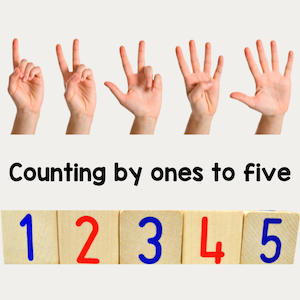













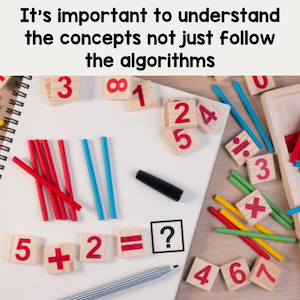

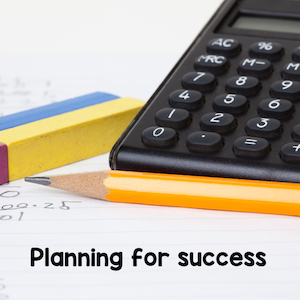


















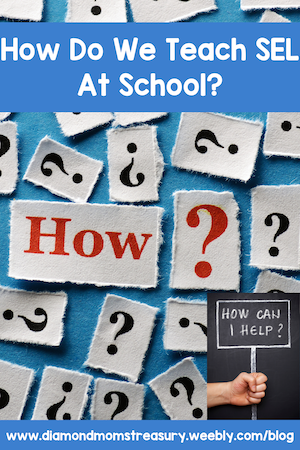
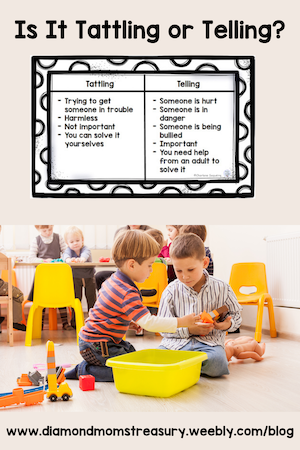



 RSS Feed
RSS Feed